
Exploring the Wonders of the Arecibo Observatory
Discover the Arecibo Observatory: A Gateway to the Stars and a Testament to Human Curiosity in Puerto Rico's Beautiful Landscape.
Nestled in the lush forests of Puerto Rico, the Arecibo Observatory stands as a marvel of engineering and science. This iconic site is home to one of the world's largest radio telescopes, which for decades has been a key player in astronomical discoveries. The observatory has captured the imaginations of scientists and tourists alike, offering a unique glimpse into the far reaches of our universe. Visitors to the Arecibo Observatory can explore its rich history and significant contributions to science. From studying distant galaxies to monitoring asteroids, the research conducted here has been pivotal. The visitor center provides an engaging experience with informative exhibits, interactive displays, and a theater showing documentaries about the cosmos and the observatory's work. The scenic drive to the observatory is an adventure in itself, winding through verdant hills and offering stunning views of the Puerto Rican landscape. Upon arrival, the vast dish of the radio telescope is an awe-inspiring sight. Guided tours are available, providing in-depth knowledge about the facility's operations and its role in global scientific research.
Local tips in Arecibo Observatory
- Check the weather forecast before your visit, as the observatory is in a rainforest area and weather conditions can change rapidly.
- Wear comfortable walking shoes as there will be some walking and inclines around the observatory.
- Bring water and snacks, as the on-site facilities may have limited options.
- Visit early in the day to avoid crowds and have a more personal experience.
- Don't forget your camera; the views and the observatory itself offer great photo opportunities.
Exploring the Wonders of the Arecibo Observatory
Nestled in the lush forests of Puerto Rico, the Arecibo Observatory stands as a marvel of engineering and science. This iconic site is home to one of the world's largest radio telescopes, which for decades has been a key player in astronomical discoveries. The observatory has captured the imaginations of scientists and tourists alike, offering a unique glimpse into the far reaches of our universe. Visitors to the Arecibo Observatory can explore its rich history and significant contributions to science. From studying distant galaxies to monitoring asteroids, the research conducted here has been pivotal. The visitor center provides an engaging experience with informative exhibits, interactive displays, and a theater showing documentaries about the cosmos and the observatory's work. The scenic drive to the observatory is an adventure in itself, winding through verdant hills and offering stunning views of the Puerto Rican landscape. Upon arrival, the vast dish of the radio telescope is an awe-inspiring sight. Guided tours are available, providing in-depth knowledge about the facility's operations and its role in global scientific research.
When is the best time to go to Arecibo Observatory?
Iconic landmarks you can’t miss
Reserva Natural Cueva del Indio
Experience the breathtaking beauty and rich history of Reserva Natural Cueva del Indio, a stunning natural reserve in Arecibo, Puerto Rico.
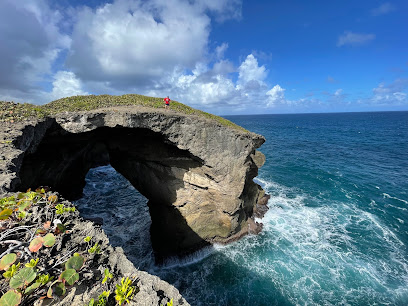
Arecibo Lighthouse and Historical Park
Experience the historical charm and natural beauty of Arecibo Lighthouse and Historical Park, a must-visit destination in Puerto Rico.
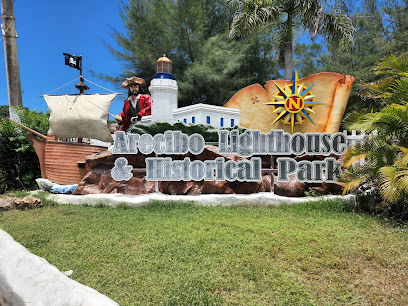
Cueva Ventana
Discover the breathtaking beauty of Cueva Ventana, a limestone cave offering stunning views and rich cultural history in Arecibo, Puerto Rico.
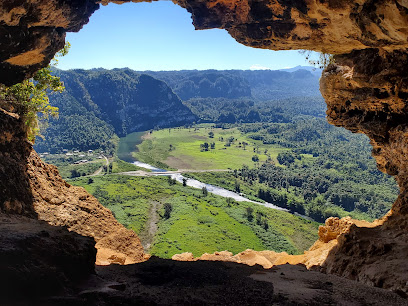
Arecibo Observatory-VSQ
Explore the Arecibo Observatory, a remarkable testament to astronomical research and stunning natural landscapes in Puerto Rico.

Unmissable attractions to see
Arecibo Lighthouse and Historical Park
Discover the Arecibo Lighthouse and Historical Park, where history meets stunning coastal views in Puerto Rico.
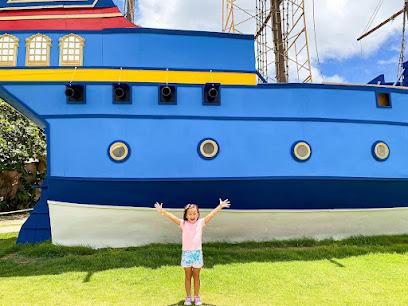
Playa Jobos
Experience the charm of Playa Jobos, an enchanting beach destination in Isabela, Puerto Rico, perfect for sun, surf, and relaxation.
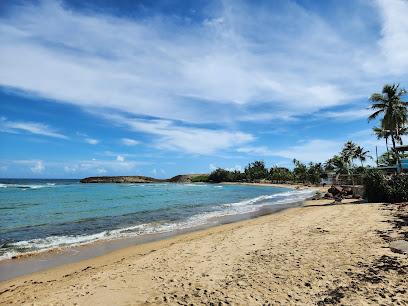
Montones Beach
Experience the breathtaking beauty of Montones Beach in Puerto Rico, a perfect destination for relaxation, adventure, and culinary delights.
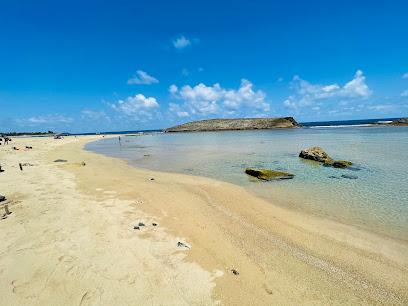
Coliseo Manuel G. Petaca Iguina Reyes
Discover the excitement of Coliseo Manuel G. Petaca Iguina Reyes, Arecibo's premier venue for sports and live entertainment, capturing the vibrant culture of Puerto Rico.
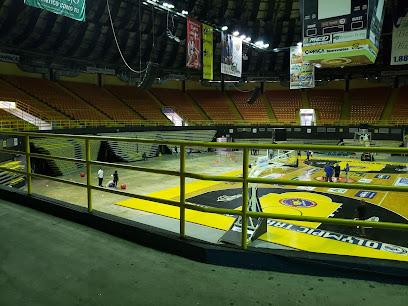
Surfer's Beach
Experience the sun-soaked paradise of Surfer's Beach in Aguadilla, a top destination for surfing, relaxation, and vibrant Caribbean culture.
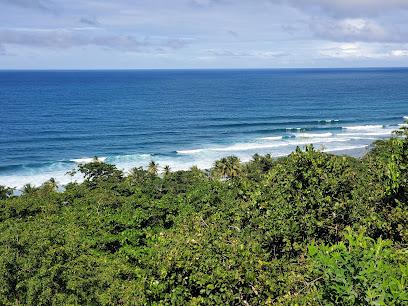
Bosque Estatal de Cambalache
Discover the natural beauty of Bosque Estatal de Cambalache, a lush state park in Puerto Rico, perfect for hiking and wildlife enthusiasts.

Hacienda Buena Vista - Para la Naturaleza
Explore the rich history and captivating beauty of Hacienda Buena Vista, a stunning coffee plantation in Ponce, Puerto Rico.
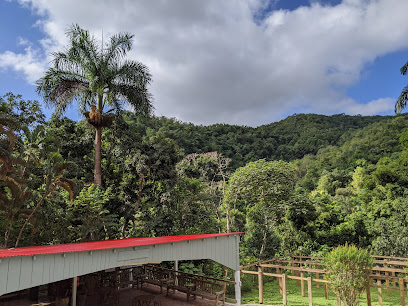
DEL NORTE FUN PARK
Explore Del Norte Fun Park in Hatillo, Puerto Rico - a family-friendly amusement park filled with thrilling rides and unforgettable fun!
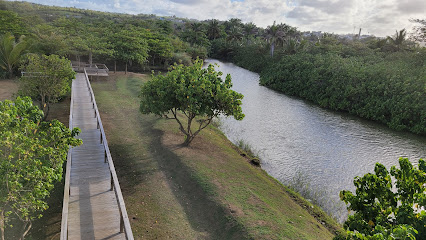
Villa Madera
Explore the heart of Puerto Rican culture at Villa Madera, a museum that showcases the island's rich history and vibrant artistic traditions.

Caza y Pesca Playa
Discover the stunning beauty and vibrant culture at Caza y Pesca Playa in Arecibo, Puerto Rico, a perfect destination for relaxation and adventure.
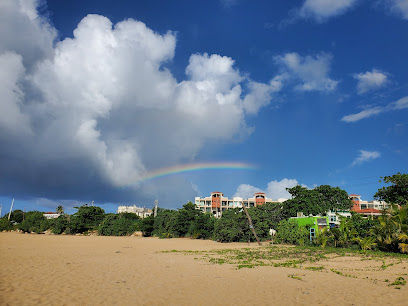
Primera Cascada de la Planta
Experience the breathtaking beauty of Primera Cascada de la Planta, a stunning waterfall in Arecibo, Puerto Rico, perfect for nature lovers and adventure seekers.
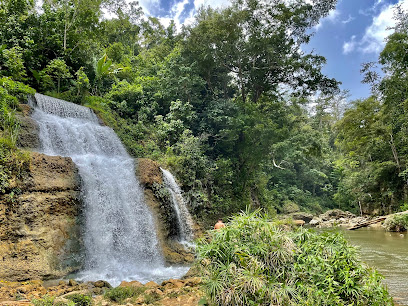
Guajataca Lake
Experience the serene beauty and adventure at Guajataca Lake, a hidden gem in Puerto Rico's lush landscapes, perfect for nature lovers and outdoor enthusiasts.
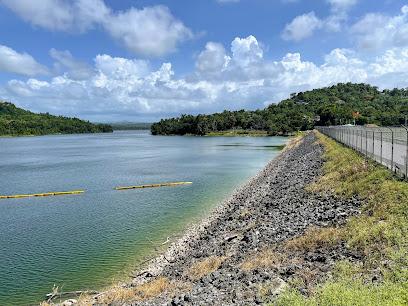
Playa Guajataca
Experience the breathtaking beauty of Playa Guajataca, a serene beach in Isabela, Puerto Rico, perfect for relaxation and adventure by the sea.
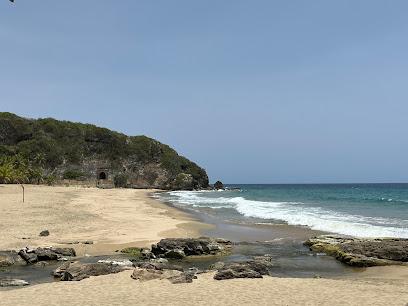
Hacienda Mis Sueños
Explore the cultural heartbeat of Puerto Rico at Hacienda Mis Sueños, a museum that brings local history and art to life in a stunning setting.

El Faro Beach
Discover the serene beauty of El Faro Beach in Arecibo, a perfect blend of relaxation, adventure, and stunning coastal views in Puerto Rico.

Essential places to dine
Islote Beach Restaurant
Discover Islote Beach Restaurant: Enjoy fresh seafood and stunning ocean views in Arecibo's coastal paradise.
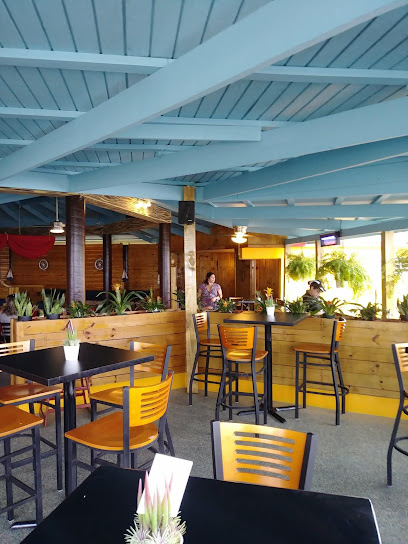
Salitre Mesón Costero
Discover exquisite seafood dishes at Salitre Mesón Costero in Arecibo - where ocean flavors meet local traditions.

Playa Brava Arecibo
Experience authentic Puerto Rican cuisine with breathtaking ocean views at Playa Brava Arecibo - a culinary gem in Arecibo's coastal paradise.
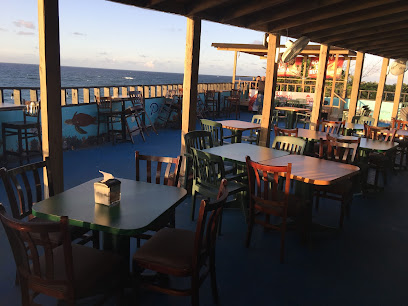
Bocata Smokehouse & Restaurant
Discover Bocata Smokehouse & Restaurant: A Barbecue Paradise in Arecibo Offering Smoky Delights and Warm Hospitality.
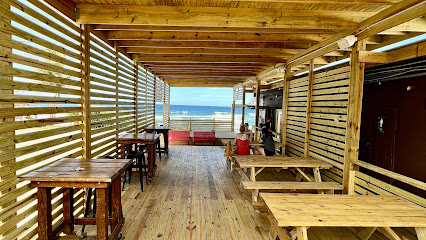
El Trapiche Bar & Restaurant
Discover authentic Puerto Rican cuisine at El Trapiche Bar & Restaurant in Arecibo – where flavors meet tradition.
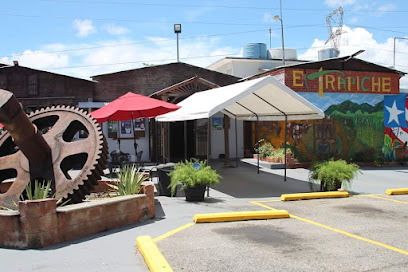
El Buen Mofongo De Doña Rosa
Experience authentic Puerto Rican cuisine at El Buen Mofongo De Doña Rosa in Arecibo – home of the best mofongo on the island!
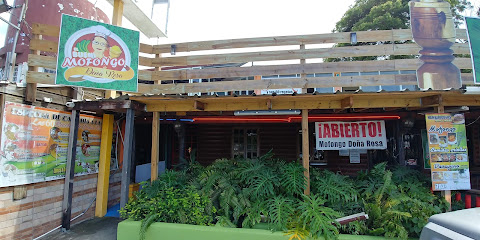
Gustitos Criollos
Experience authentic Puerto Rican cuisine at Gustitos Criollos in Arecibo – where local flavors meet warm hospitality.
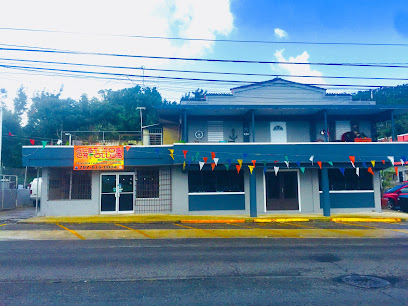
La Güira Cocina Puertorriqueña
Discover the heart of Puerto Rican cuisine at La Güira Cocina Puertorriqueña in Arecibo – where tradition meets taste!
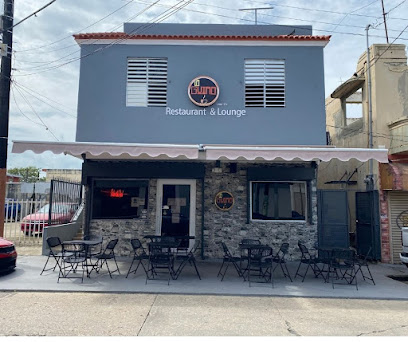
Salpicón Restaurant
Experience the best of Puerto Rican seafood at Salpicón Restaurant in Arecibo – where fresh flavors meet warm hospitality.
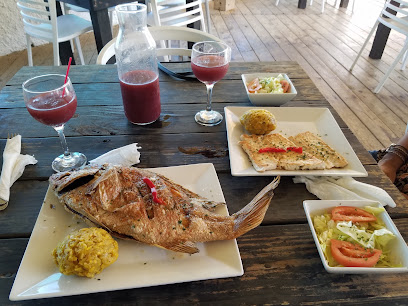
Picholo's
Experience authentic Puerto Rican cuisine at Picholo's, where fresh ingredients meet vibrant flavors in a welcoming atmosphere.
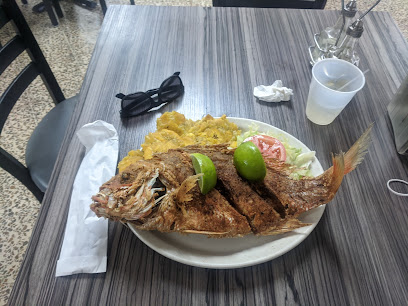
La Buena Vida
Discover vibrant flavors and lively entertainment at La Buena Vida in Arecibo – where every meal is a celebration of Puerto Rican culture.
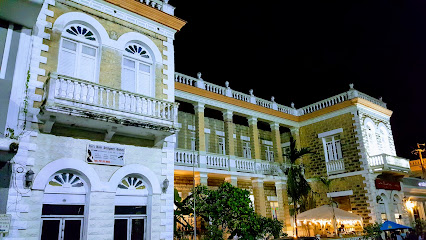
El Nuevo Guayabo
Experience authentic Puerto Rican cuisine at El Nuevo Guayabo in Arecibo – a delightful culinary journey awaits you!
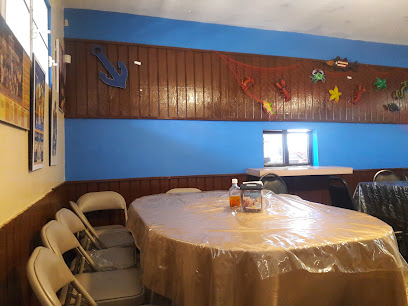
Callejón del Beso
Discover Callejón del Beso: Arecibo's enchanting restaurant serving exquisite Latin American cuisine and vibrant cocktails.
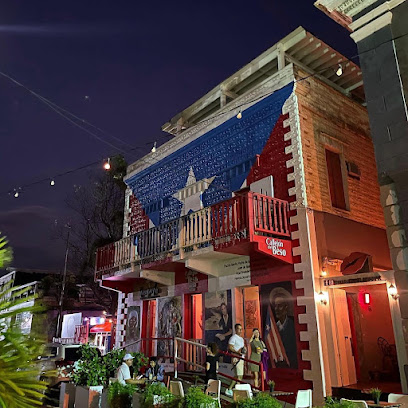
La Union de Todo
Experience authentic Puerto Rican cuisine at La Union de Todo in Arecibo—where flavor meets tradition in a cozy atmosphere.
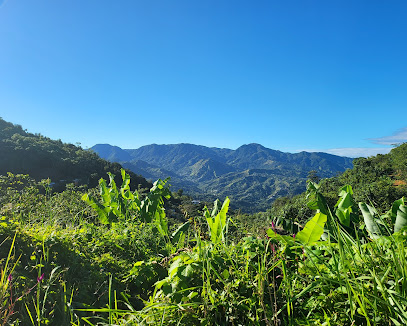
Arasibo Steak House
Discover Arasibo Steak House in Arecibo – where quality meats meet exceptional flavor in a welcoming atmosphere.
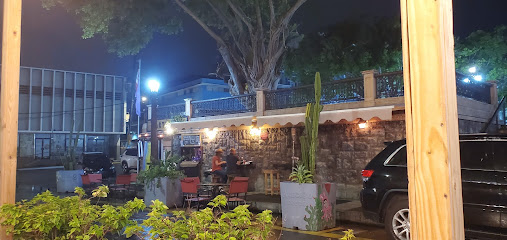
Markets, malls and hidden boutiques
Plaza del Atlántico
Discover a shopper's paradise at Plaza del Atlántico, where vibrant stores, delicious dining, and exciting events await you in Arecibo, Puerto Rico.
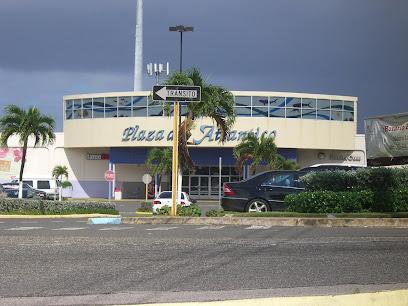
Arecibo Plaza Shopping Center
Discover Arecibo Plaza Shopping Center, the ultimate shopping destination in Puerto Rico with diverse stores, delicious dining, and vibrant entertainment options.

Panadería Gerizim 4 Bayaney
Explore the authentic flavors of Puerto Rico at Panadería Gerizim, a beloved bakery offering delightful pastries and local treats in Hatillo.
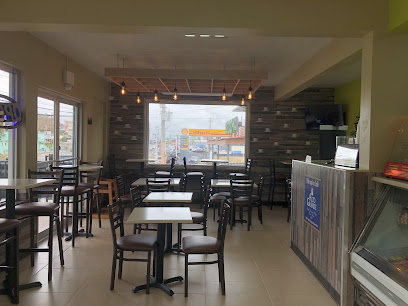
Angel's Pet Shop Arecibo
Discover a treasure trove of pet supplies at Angel's Pet Shop Arecibo, where every pet owner finds the perfect products for their furry companions.
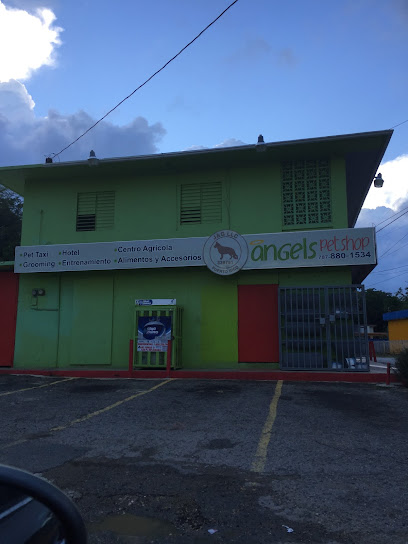
Burén Café
Discover the charming Burén Café in Arecibo, where delicious pastries and expertly brewed coffee meet local culture in a cozy atmosphere.
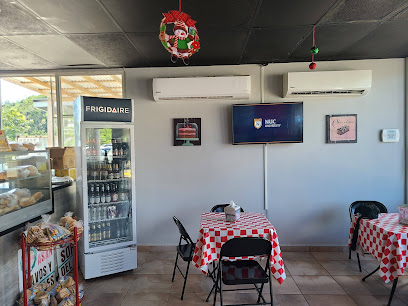
Incienso
Explore your creative side at Incienso, Arecibo's leading tattoo and piercing shop renowned for its skilled artists and vibrant community atmosphere.
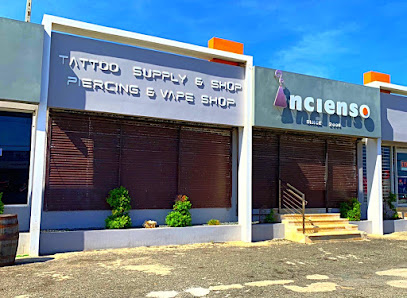
Supermercado Agranel
Explore the vibrant flavors of Puerto Rico at Supermercado Agranel, your go-to destination for local groceries and authentic snacks.

Fabián Scooters Racing Parts
Discover Fabián Scooters Racing Parts, the ultimate destination for scooter enthusiasts in Arecibo, Puerto Rico, offering top-quality racing parts and expert advice.
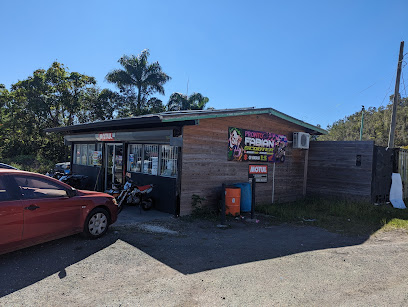
GR Cash & Carry
Discover the essence of Puerto Rican flavors at GR Cash & Carry, a vibrant grocery store in Hatillo offering local and international delights.

Teatro-Arte Alemany's
Discover the vibrant local artistry at Teatro-Arte Alemany's in Arecibo, a must-visit store for unique crafts and cultural experiences.
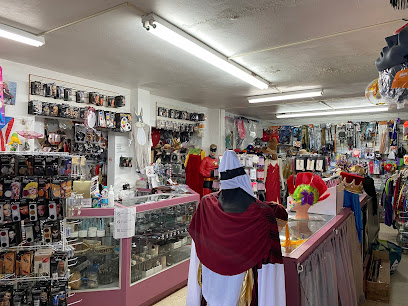
Local Story
Discover unique souvenirs and local crafts at Local Story, a charming gift shop in Dorado, Puerto Rico, perfect for every traveler.

Claro de Bayaney
Claro de Bayaney: Your destination for mobile connectivity in Arecibo, ensuring you stay connected while exploring Puerto Rico.
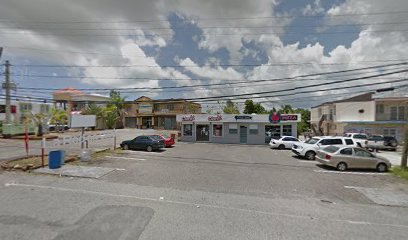
Fenomenogeek Arecibo
Explore a treasure trove of toys and collectibles at Fenomenogeek Arecibo, a must-visit destination for families and toy enthusiasts in Puerto Rico.

Ferretería el conuco
Explore the vibrant local culture at Ferretería el Conuco, Arecibo's favorite hardware store with expert advice and diverse supplies.

Tienda americo
Explore Tienda Americo in Arecibo for a unique shopping experience featuring a wide range of quality equipment imports in a friendly atmosphere.
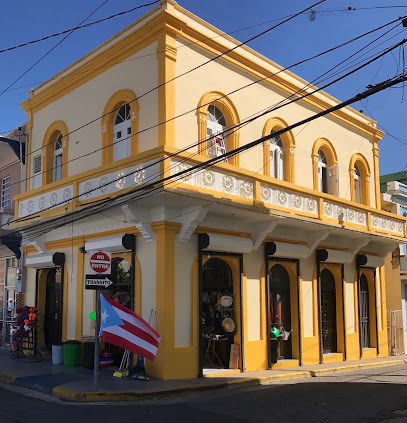
Essential bars & hidden hideouts
Islote Beach Restaurant
Experience the flavors of Puerto Rico at Islote Beach Restaurant, where fresh seafood meets stunning ocean views in a relaxed seaside setting.
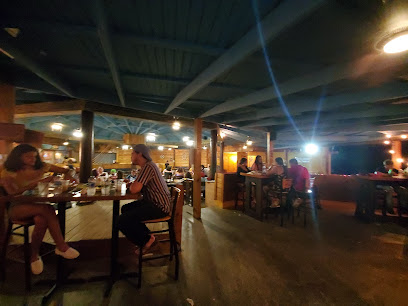
Bocata Smokehouse & Restaurant
Experience the best barbecue in Arecibo at Bocata Smokehouse & Restaurant, where every bite is a celebration of authentic Puerto Rican flavors.
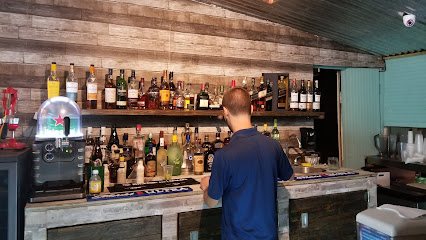
La Güira Cocina Puertorriqueña
Experience the rich flavors of Puerto Rican cuisine at La Güira, the heart of Arecibo's culinary scene.
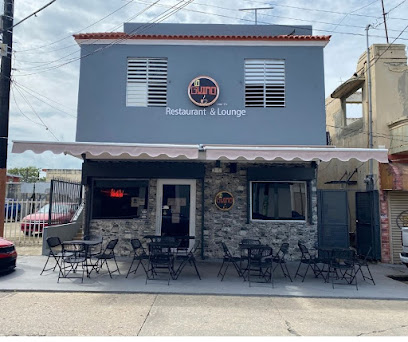
First Stop Grill and More
Discover the culinary delights of First Stop Grill and More in Cambalache, Arecibo, where authentic Puerto Rican flavors meet a vibrant atmosphere.
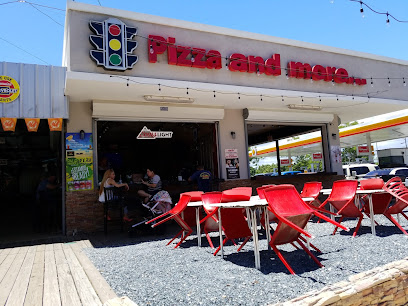
La Buena Vida
Discover La Buena Vida: A vibrant bar and restaurant in Arecibo offering delicious food, refreshing drinks, and lively local music.
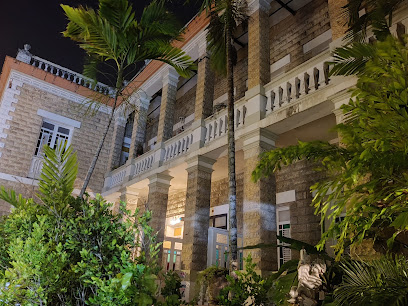
Truck Stop Bar and Grill
Experience authentic Puerto Rican cuisine at Truck Stop Bar and Grill in Arecibo, where delicious meals meet a lively atmosphere.
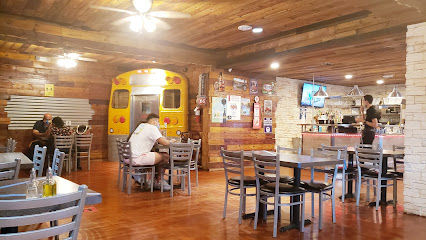
Willie's Sport Bar
Experience the thrill of live sports and delicious food at Willie's Sport Bar in Arecibo - a true haven for sports enthusiasts.
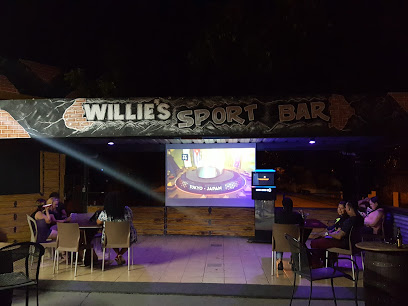
Callejón del Beso
Experience the vibrant flavors of Latin America at Callejón del Beso, a culinary gem in Arecibo offering authentic dishes and a lively atmosphere.
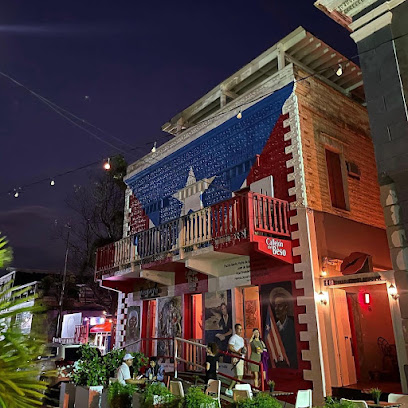
Árbore Gastrobar
Experience the authentic flavors of Puerto Rican cuisine at Árbore Gastrobar, a culinary haven in Arecibo perfect for food enthusiasts.
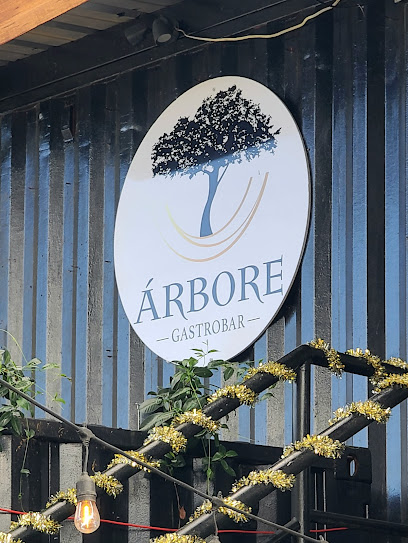
La Terraza Sport Bar Dominguito
Experience the vibrant nightlife at La Terraza Sport Bar Dominguito in Arecibo, where local culture meets entertainment in a friendly atmosphere.
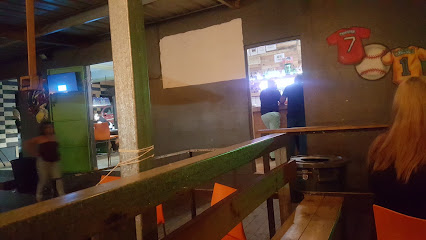
W Bar & Restaurant
Experience the vibrant flavors and artistic cocktails at W Bar & Restaurant, Arecibo's premier dining destination for both locals and tourists.
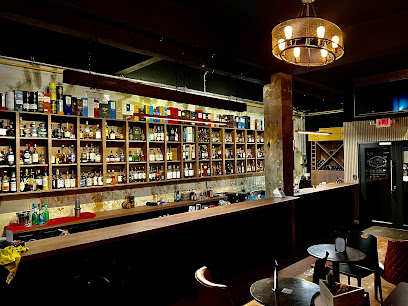
Hacienda La Belleza Escondida
Experience the vibrant culture and exquisite flavors at Hacienda La Belleza Escondida, a top bar destination in Arecibo, Puerto Rico.
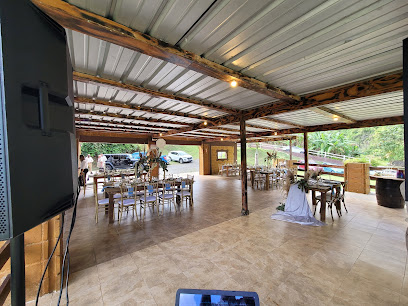
La Distilleria
Discover La Distilleria, Arecibo's premier cocktail bar and tapas restaurant, where innovative drinks and delicious small plates come together in a lively atmosphere.

Al Lado
Discover the vibrant nightlife at Al Lado, Arecibo's premier bar offering exceptional cocktails and local brews in a warm, inviting atmosphere.
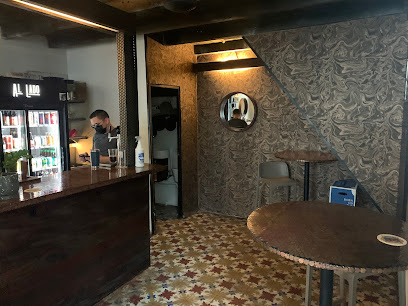
612 Cigar Lounge
Discover the elegant 612 Cigar Lounge in Arecibo, where premium cigars and crafted cocktails meet a sophisticated atmosphere for the ultimate relaxation.
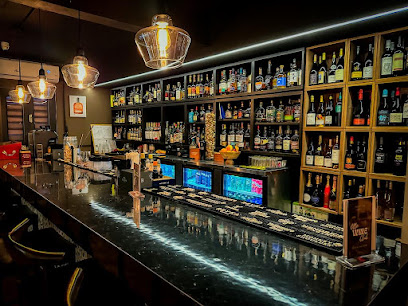
Local Phrases about Arecibo Observatory
-
- HelloHola
[oh-lah] - GoodbyeAdiós
[ah-dee-ohs] - YesSí
[see] - NoNo
[noh] - Please/You're welcomePor favor/De nada
[por fah-bor/deh nah-dah] - Thank youGracias
[grah-see-ahs] - Excuse me/SorryPerdón/Lo siento
[pair-dohn/loh see-ehn-toh] - How are you?¿Cómo estás?
[koh-moh ehs-tahs] - Fine. And you?Bien. ¿Y tú?
[byehn. ee too] - Do you speak English?¿Hablas inglés?
[ah-blahs een-glays] - I don't understandNo entiendo
[noh ehn-tyehn-doh]
- HelloHola
-
- I'd like to see the menu, pleaseMe gustaría ver el menú, por favor
[meh goos-tah-ree-ah behr ehl meh-noo por fah-bor] - I don't eat meatNo como carne
[noh koh-moh kahr-neh] - Cheers!¡Salud!
[sah-lood] - I would like to pay, pleaseMe gustaría pagar, por favor
[meh goos-tah-ree-ah pah-gahr por fah-bor]
- I'd like to see the menu, pleaseMe gustaría ver el menú, por favor
-
- Help!¡Ayuda!
[ah-yoo-dah] - Go away!¡Vete!
[veh-teh] - Call the Police!¡Llama a la Policía!
[yah-mah ah lah poh-lee-see-ah] - Call a doctor!¡Llama a un doctor!
[yah-mah ah oon dohk-tohr] - I'm lostEstoy perdido
[ehs-toy pair-dee-doh] - I'm illEstoy enfermo
[ehs-toy ehn-fehr-moh]
- Help!¡Ayuda!
-
- I'd like to buy...Me gustaría comprar...
[meh goos-tah-ree-ah kohm-prahr] - I'm just lookingSolo estoy mirando
[soh-loh ehs-toy mee-rahn-doh] - How much is it?¿Cuánto cuesta?
[kwan-toh kwehs-tah] - That's too expensiveEso es demasiado caro
[eh-soh ehs deh-mah-syah-doh kah-roh] - Can you lower the price?¿Puedes bajar el precio?
[pweh-dehs bah-har ehl preh-see-oh]
- I'd like to buy...Me gustaría comprar...
-
- What time is it?¿Qué hora es?
[keh oh-rah ehs] - It's one o'clockEs la una
[ehs lah oo-nah] - Half past (10)Y media (10)
[ee meh-dyah (dheez)] - MorningMañana
[mah-nyah-nah] - AfternoonTarde
[tahr-deh] - EveningNoche
[noh-cheh] - YesterdayAyer
[ah-yehr] - TodayHoy
[oy] - TomorrowMañana
[mah-nyah-nah] - 1Uno
[oo-noh] - 2Dos
[dohs] - 3Tres
[trehs] - 4Cuatro
[kwah-troh] - 5Cinco
[seen-koh] - 6Seis
[says] - 7Siete
[syeh-teh] - 8Ocho
[oh-choh] - 9Nueve
[nweh-veh] - 10Diez
[dyehs]
- What time is it?¿Qué hora es?
-
- Where's a/the...?¿Dónde está...?
[dohn-deh ehs-tah] - What's the address?¿Cuál es la dirección?
[kwal ehs lah dee-rehk-syohn] - Can you show me (on the map)?¿Puedes mostrarme (en el mapa)?
[pweh-dehs mohs-trar-meh (ehn ehl mah-pah)] - When's the next (bus)?¿Cuándo es el próximo (autobús)?
[kwan-doh ehs ehl prohk-see-moh (ow-toh-boos)] - A ticket (to ....)Un boleto (a ....)
[oon boh-leh-toh (ah)]
- Where's a/the...?¿Dónde está...?
History of Arecibo Observatory
-
The Arecibo Observatory was conceived in the late 1950s by Dr. William E. Gordon of Cornell University. Groundbreaking for the observatory began in mid-1959, with the intent to study the Earth's ionosphere. The construction, funded by the Advanced Research Projects Agency (ARPA), was completed in 1963. The observatory featured a massive 305-meter (1,000-foot) radio dish, which was the largest and most sensitive radio telescope in the world at the time.
-
Shortly after its completion, the Arecibo Observatory made significant contributions to the field of radio astronomy. One of the first major achievements was the discovery of the period of Mercury's rotation in 1964, which corrected previous assumptions about the planet's day length. The observatory also played a critical role in the discovery of the first binary pulsar in 1974, a finding that later earned the Nobel Prize in Physics for Russell Hulse and Joseph H. Taylor Jr.
-
The Arecibo Observatory has been a key player in the Search for Extraterrestrial Intelligence (SETI) since the 1970s. In 1974, the Arecibo Message, a radio message carrying basic information about humanity and Earth, was transmitted to the globular star cluster M13 in an attempt to communicate with extraterrestrial civilizations. Additionally, the observatory has been instrumental in tracking near-Earth objects (NEOs) and asteroids, contributing to planetary defense efforts by mapping their trajectories and characteristics.
-
Throughout its operational years, the Arecibo Observatory underwent several technological upgrades to enhance its capabilities. In the 1990s, a significant upgrade included the installation of a high-power radar transmitter, which allowed more detailed studies of the ionosphere and solar system bodies. Further improvements included the addition of the Gregorian reflector system in 1997, which expanded the observatory's frequency range and improved its observational accuracy.
-
The Arecibo Observatory has not only been a hub for scientific research but also a cultural and educational icon. It has inspired countless individuals through its prominent appearances in popular media, including movies like 'Contact' and 'GoldenEye.' The observatory has hosted numerous educational programs and public tours, fostering interest in science and astronomy among students and visitors from around the world. It has also been a source of pride for Puerto Rico, symbolizing the island's contributions to global scientific endeavors.
-
In the late 2010s, the Arecibo Observatory faced significant structural challenges. In August 2020, a support cable broke, causing damage to the dish and platform. Despite efforts to stabilize and repair the structure, a subsequent cable failure in November 2020 led to the decision to decommission the telescope. Tragically, on December 1, 2020, the suspended platform collapsed, causing irreparable damage to the iconic dish and marking the end of an era for the historic observatory.
Arecibo Observatory Essentials
-
Arecibo Observatory is located in the municipality of Arecibo, in the northern part of Puerto Rico. The closest major airport is Luis Muñoz Marín International Airport (SJU) in San Juan, approximately 80 kilometers away. From San Juan, you can rent a car and drive to the observatory, which typically takes about 1.5 to 2 hours. Alternatively, you can take a shuttle service or a taxi, though renting a car provides more flexibility for exploring the area.
-
Once in Arecibo, renting a car is the most convenient option for getting around, as public transportation options are limited. Local taxis and ride-sharing services like Uber are also available. Keep in mind that the observatory is in a remote area, so having your own vehicle will make your visit more comfortable and flexible.
-
The official currency in Puerto Rico is the US Dollar (USD). Credit and debit cards are widely accepted at the Arecibo Observatory and in most establishments in the area. However, it's advisable to carry some cash for small purchases or in case you visit rural areas where card payments may not be accepted. ATMs are available in the town of Arecibo and other urban areas.
-
Arecibo is generally safe for tourists, but it is advisable to follow standard safety precautions. Avoid walking alone at night in isolated areas and keep an eye on your belongings in crowded places. Some neighborhoods in Arecibo have higher crime rates, so it's best to stay in well-populated and well-lit areas. Always lock your car and avoid leaving valuables inside.
-
In case of emergency, dial 911 for immediate assistance. The nearest hospital is Hospital Metropolitano Dr. Susoni in Arecibo, which offers medical services for emergencies. It's recommended to have travel insurance that includes medical coverage. For minor health issues, pharmacies are available in Arecibo where you can purchase over-the-counter medications.
-
Fashion: Do dress comfortably and appropriately for the climate, which is typically hot and humid. Lightweight clothing and comfortable walking shoes are recommended. Religion: Do respect local customs and traditions, although Puerto Rico is predominantly Catholic, religious practices are generally relaxed. Public Transport: Do use ride-sharing services or taxis for convenience. Don't rely heavily on public buses, as they may have irregular schedules. Greetings: Do greet people with a friendly 'Hola' or 'Buenos días' and a handshake. Eating & Drinking: Do try local dishes like mofongo and fresh seafood. Don't refuse hospitality, as Puerto Ricans are known for their friendliness and generosity.
-
To experience Arecibo like a local, visit the local markets where you can buy fresh produce and traditional Puerto Rican goods. Engage with locals, as they are often friendly and willing to share stories about the area. Don't miss visiting nearby attractions like the Rio Camuy Caves and Cueva Ventana. For a unique experience, take a hike in the surrounding karst region, which offers stunning natural scenery.
Nearby Cities to Arecibo Observatory
-
Things To Do in Manatí
-
Things To Do in Isabela
-
Things To Do in Ponce
-
Things To Do in Aguadilla
-
Things To Do in Guánica
-
Things To Do in Cabo Rojo
-
Things To Do in Dorado
-
Things To Do in Rincon
-
Things To Do in Bayamón
-
Things To Do in Caguas
-
Things To Do in Guayama
-
Things To Do in Carolina
-
Things To Do in Luquillo
-
Things To Do in Fajardo
-
Things To Do in Vieques








